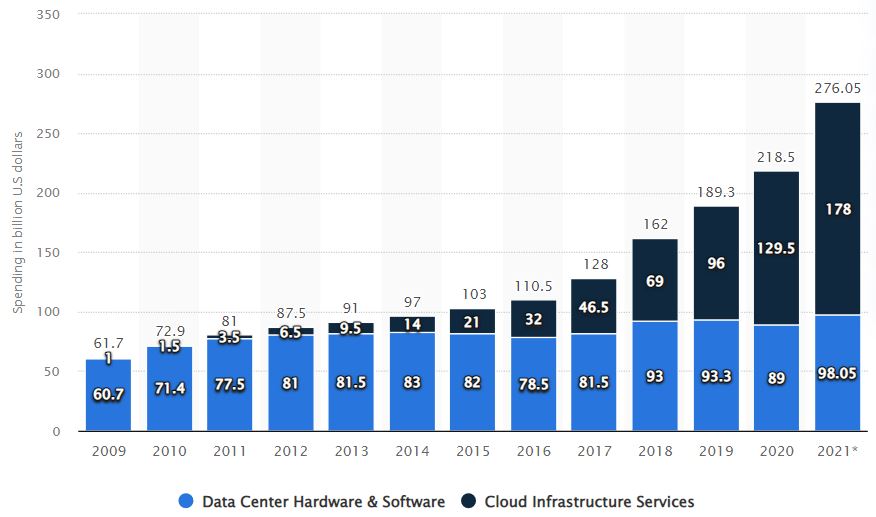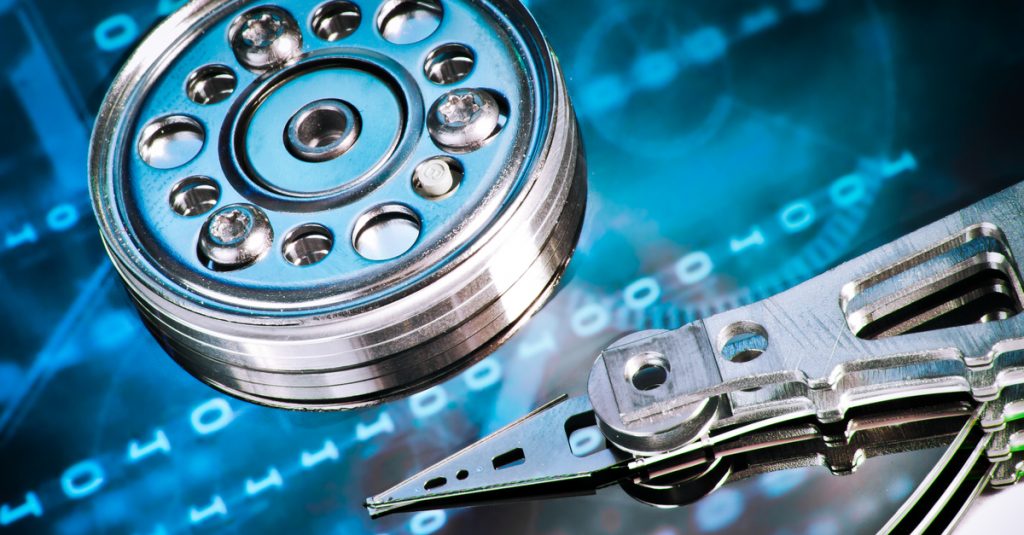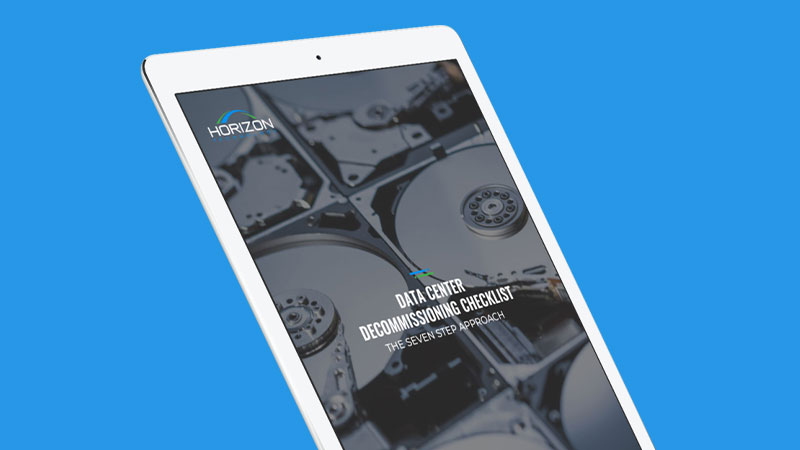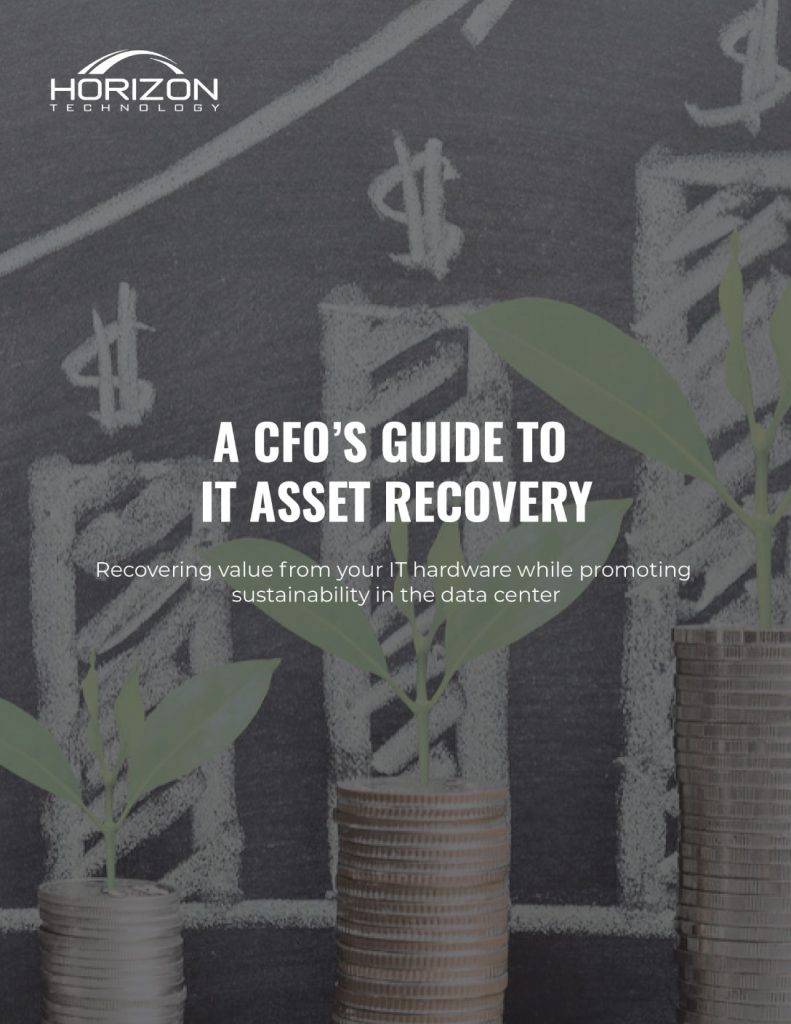In today’s device-driven age, IT asset disposition (ITAD) is an essential component of safe and secure enterprise computing.
As the sophistication of IT hardware grows, the question of what to do with retiring or end-of-life computing equipment intensifies. Companies must keep data secure and compliant, but they must also consider environmental and financial factors— simply sending data center hardware to the shredder or the scrapheap no longer cuts it.
IT asset disposition, or ITAD for short, is the practice of how and where to dispose of IT hardware. Whether you’re updating, upgrading, or otherwise getting rid of computer equipment, IT asset disposition practices support your organization’s disposal needs.
Read on for our comprehensive guide to IT asset disposition as it relates to shifting needs in IT procurement and the enterprise data center.
- Investment in IT Equipment
- Growth in Data Center ITAD Services
- IT Asset Disposition For Data Center Decommissioning
- Endpoint Devices vs Data Center Hardware
- The Reuse Movement and Open Hardware
- Asset Disposition and Responsible Recycling
- ITAD and Supply Chain Management
- Data Security and Ensuring Legal Compliance
- Approaching IT Asset Disposition Strategically
- Services to Look For in an ITAD Company
- What Is ITAD? 5-Point Summary
- Read More About ITAD In Our Expert Guide To IT Asset Recovery
Investment in IT Equipment
Perhaps unsurprisingly for our data-driven age, the world is manufacturing more IT hardware, not less. Whether companies like it or not, they find themselves constantly channeling their spending toward the latest and greatest devices.
Nowhere is this trend seen more clearly than in enterprise spend in data center and cloud infrastructure services. In 2021, investment in these areas soared past $275 billion. The need to handle more complex workloads across increasingly hybrid infrastructure is driving up expenditure.
Enterprise Spending on Cloud and Data Centers by Segment from 2009 to 2021

While the disruption of the coronavirus pandemic initially led to a slight slowdown in data center spending in early 2020, the rate of investment quickly picked back up.
Commercial investment into cloud and on-premises data centers continued into 2021, both in cloud and on-premises expenditure. And this growth isn’t slowing anytime soon. A recent IDC report forecasts that spending on cloud infrastructure will grow at a 12% CAGR through 2026.
Data center technology is now too central a feature of modern infrastructure for organizations to lessen their investments for any length of time. This means that any data-driven company today must have a coherent lifecycle strategy for its hardware asset management, starting with procurement and running through decommissioning.
Growth in Data Center ITAD Services
Amid this hardware expansion, IT asset disposition services for the data center represent a growing global market. The reality is that all organizations directly manage some level of IT hardware, and all data center equipment will eventually need repairing, remarketing, or discarding responsibly.
No surprise then that, while refresh cycles appear to be lengthening, the global market for data center ITAD services continues to mature both in spend and scope. Nowadays, top ITAD providers offer much more than compliant disposition.
Services such as data sanitization already attract a large slice of the ITAD budget. Organizations are rightly anxious to expunge potentially confidential data from end-of-life storage media. The penalties for companies that neglect this fact can be steep.
Meanwhile, IT asset recovery, a specialized practice within IT asset disposition that focuses on maximizing value recovery from retiring or excess hardware, is another burgeoning segment within the ITAD market.
Research suggests those businesses that regularly refresh their IT equipment benefit from lower operating costs than those that cling to their old equipment until it fails.
IT Asset Disposition For Data Center Decommissioning
Many factors drive the need for companies to dispose of data center hardware. One such scenario is the decision to close down all or part of a data center.
The logistical considerations behind decommissioning a data center are complex. Amid many variables, determining the plan for decommissioned assets is key. Tearing down data center equipment without an approved plan for its reuse, remarketing, or secure disposal is a bad idea.
Learn more about how to get the most out of data center decommissioning services in our handy guide.
Endpoint Devices vs Data Center Hardware
IT asset disposition covers both data center hardware and endpoint devices such as cell phones and laptops. ITAD companies may specialize in one, or both.
Ask the same fundamental questions around the reuse and disposition of endpoint devices that you ask of data center hardware. Just think of all the company cellphones and laptops in circulation right now:
- What is your policy for identifying and erasing company data on these devices when returned?
- Can you reuse them within your organization or remarket them outside of your company?
- If disposition is required, what does this mean for compliance purposes and what does responsible recycling look like in practice?
“A company without a rigorous ITAD program runs the risk of a breach from a much simpler problem: a piece of hardware that was either not properly tracked to begin with or stops being tracked before its final disposition is confirmed.”
Barbara Rembiesa, head of industry group IAITAM
In any event, it is important for your organization to have a comprehensive ITAD strategy in place that covers all equipment under your management, regardless of hardware type.
The Reuse Movement and Open Hardware
Before disposing of any hardware, a good ITAD specialist will explore all options for reuse.
The commitment to hardware reuse is closely tied to the open source movement. The development of open hardware standards in the data center has created secondary (and tertiary) markets for white label equipment that can more easily be repurposed for use in other data center environments.
Through the Open Compute Project (OCP), hyperscalers such as Dell and Microsoft have pushed the envelope in opening up hardware standards that may otherwise have been subject to vendor restrictions.
Meanwhile, OCP members such as Google are known for proactively repairing their custom hardware. The global search giant reportedly runs its hyperscale data centers with little distinction between refurbished and new equipment.
Initiatives such as these help foster a greater receptiveness among on-premises operators toward the secure remarketing of IT equipment. Too much retiring server and storage hardware still gets earmarked for the landfill.
According to research from the United Nations, 53.6 million metric tons of electronic hardware went to waste in 2019. That’s a lot of scrap by any measure, and enough to stretch around the world’s circumference approximately three times in mid-size cars.
Asset Disposition and Responsible Recycling
Although reuse is the gold standard in ITAD, there are still times when it makes sense to dispose of redundant hardware. In these instances, it is important to ensure compliance with all local, state, and federal regulations governing the disposal of electronic equipment.
- Ask the right questions of your prospective ITAD partner.
- Request references and examples of previous disposal work.
- Check for certifications from industry bodies such as R2 and e-Stewards, both of which require certified vendors to adhere to a rigorous program of compliance around recycling best practices.
At the same time, be wary of bad actors who might talk the talk and flash the right certificates, but immediately cut corners once your back is turned if they think they can get away with it.
ITAD and Supply Chain Management
A top ITAD services company will assist with not only the remarketing and recycling of unwanted equipment, but with managing the supply chain that supports your data centers.
The global supply chain for computing hardware is inherently volatile, and it is challenging for any organization to accurately forecast its procurement needs for any length of time.
An experienced IT asset disposition firm will work with you to analyze hardware usage across your data centers, and arrive at creative solutions to optimize your inventory management at the same time as navigating stock outs and gaps in your supply chain.
Factory recertified drives are an excellent example of how the principle of reuse can help companies looking to fill short-term gaps in their hardware supply. These drives have been wiped, tested, and recertified by OEM-licensed specialists to the same exacting levels of performance as new equipment.

Learn more about the benefits of factory recertified drives.
Data Security and Ensuring Legal Compliance
The prospect of losing customer data is enough to keep most CIOs up at night. Some organizations even go so far as to physically destroy drives when no longer needed.
While executive nervousness around data security is warranted, the response is misplaced: the destruction of drives as a means of data protection is a symptom of legacy thinking. Instead, let your ITAD provider take the time to understand exactly what data you are looking to sanitize and develop custom solutions in response.
Check out your provider’s credentials for data sanitization carefully. For example, ask whether the ITAD company is certified with ADISA (the Asset Disposal & Information Security Alliance), a rigorous standard for data erasure, and ask how it ensures compliance with industry standards such as NIST SP 800-88.
Treat this as go / no-go information in your evaluation. The risk of legal liability is too great to proceed with a company that is not properly certified and compliant with the relevant bodies. Protecting your company’s good reputation (and revenue stream) is not to be taken lightly.
Approaching IT Asset Disposition Strategically
There’s little doubt that ITAD services for the data center will only grow in size and importance as we traverse the new decade.
The global economy is increasingly based around digital workloads driven by data, and these workloads and the data that fuel them ultimately live on hardware. Software may be the operational driver, but without physical hardware there is no data center.
When it comes to assessing the right partner to work with on your ITAD needs, from reuse and remarketing to responsible recycling, fully evaluate all of the options.
Probe your provider’s knowledge about different and optimal methods for erasing data from your storage media. Safe and responsible reuse should always be the first option you consider, and it is also the means to return the greatest value to your IT budget.
Do your research and ask for examples of their processes in action. The workflows around ITAD services are complex and granular, with potentially thousands of moving parts. How can your IT asset disposition partner demonstrate its ability to keep track of everything? If an ITAD company is unable to show how its certifications work in practice, be prepared to walk away.

Services to Look For in an ITAD Company
A top ITAD company can help you identify cost efficiencies in procuring new equipment while recouping value from the hardware you no longer need.
The best ITAD companies can assist with repair management and hardware optimization to make sure your data center equipment is set for success.
A top IT asset disposition firm can handle your warranty management on OEM equipment. They smartly support your return management process, too.
What Is ITAD? 5-Point Summary
Here are five things to take away about the state of IT asset disposition for the 2020s:
- As a practice, IT asset disposition covers any computing device, whether used for personal or work purposes.
- Data center ITAD specifically focuses on the responsible disposition of IT equipment used by organizations and cloud vendors in their data centers.
- Hardware lifecycle management should begin before new equipment is purchased. Create protocols for safe disposal that follow a device through its entire lifecycle.
- Before companies move to dispose of data center hardware, they should fully consider options for its repair, reuse, or recycling.
- As the market for data center ITAD services grows, companies must perform higher levels of due diligence on ITAD companies. Make sure you’re working with a partner that puts data security first.
The growth of IT asset disposition services and the future of the data center are closely aligned, with one feeding the other.
Get ahead of the game and embrace robust methods and creative solutions customized to your needs. Find an ITAD company able to support your long-term success.
Learn more about what to look for in an ITAD company. Contact Horizon Technology for an expert evaluation of your hardware environment.












